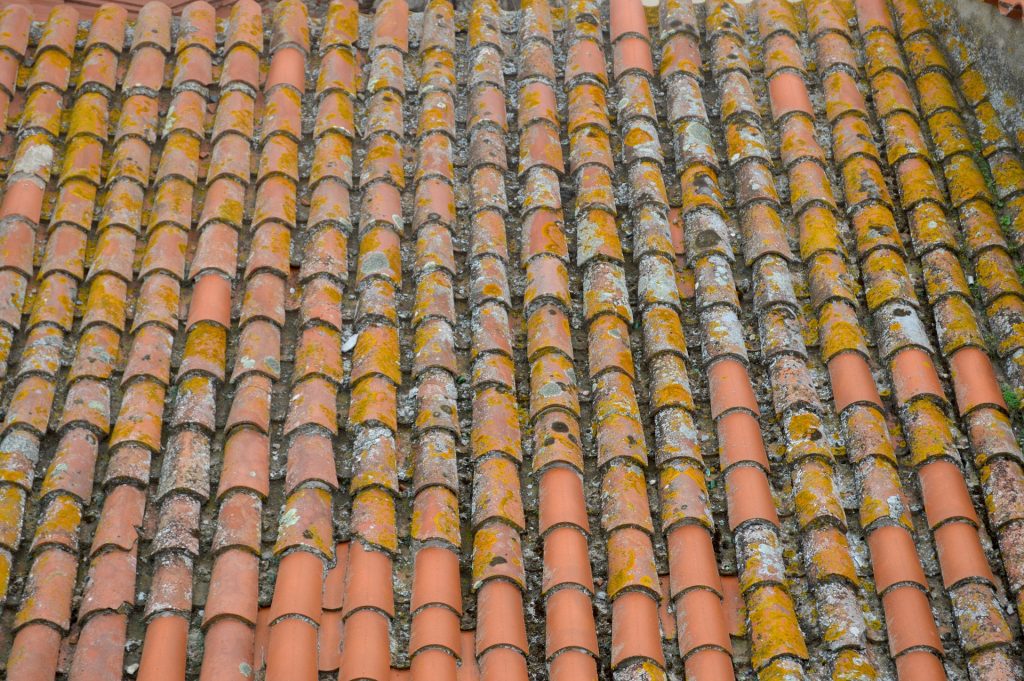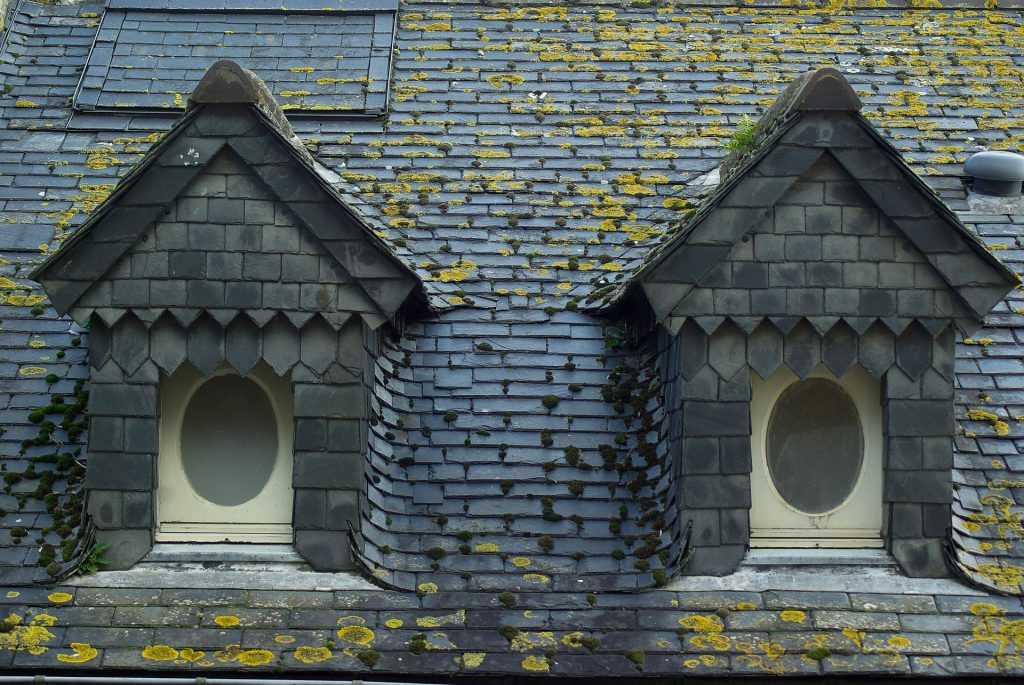The worst part about living in a storm-prone region is the potential for damage to homes. With the risk of storm damage, homeowners have to decide whether roofing tiles or slate offer the best protection. But have no fear; this guide will provide you with all the information necessary for making an informed decision about your home’s ultimate solution to storm damage.
Roofing tiles

Roofing tiles are materials designed primarily to keep out rain and protect the roof of a building. They are traditionally made from locally available materials like terracotta or slate but can also be made from modern materials such as concrete, metal, and plastic. Roof tiles are “hung” from the roof framework using nails and are arranged in overlapping parallel rows to prevent rainwater from entering and to conceal the nails.
Roof tiles come in various shapes or profiles, such as flat tiles, plain clay tiles, imbrex and tegula, Roman tiles, pantiles, monk and nun tiles, and interlocking roof tiles. Special tiles like ridge, hip, and valley tiles are used for specific positions where roof pitches meet, and they can be bedded and pointed in cement mortar or mechanically fixed. Check out the advantages and disadvantages of tile roofing below.
Advantages of roofing tiles
- Durability and longevity: Roofing tiles are known for their exceptional durability and can last between 50 and 100 years, depending on the material and proper maintenance.
- Weather resistance: Roofing tiles are designed to withstand harsh weather conditions, making them an excellent choice for homeowners dealing with storm damage.
- Aesthetic appeal: With a range of styles and colors, roofing tiles can enhance the overall look of a home while providing the necessary protection.
Disadvantages of roofing tiles
- Weight: Roofing tiles can be quite heavy, which may require additional structural support for the roof.
- Cost: The price of roofing tiles can be higher than other roofing materials, particularly for clay or premium tiles.
- Installation considerations: Roofing tiles require professional installation, which may add to the project’s overall cost.
Slate roof
Slate roofing is a type of roof tile made from natural slate installed by a slater. Slate’s unique properties, such as its two lines of breakability—cleavage, and grain—allow it to be split into thin sheets that are relatively flat and easy to stack. Slate is an ideal roofing material because it has an extremely low water absorption index of less than 0.4%, making it resistant to frost damage.

Additionally, it is fire-resistant, energy-efficient, and can last several hundred years with minimal maintenance. Slate roof tiles are usually fixed using nails or hooks, with the latter being more suitable in regions with severe weather conditions. Slate tiles are used for roofing, interior and exterior flooring, stairs, walkways, and wall cladding.
Advantages of slate roofing
- Durability and longevity: Slate roofing is known for its remarkable durability, with a lifespan exceeding 100 years when properly maintained.
- Weather resistance: Slate’s natural properties make it highly resistant to harsh weather conditions, including storms, making it an ideal choice for homeowners concerned about storm damage.
- Aesthetic appeal: Slate roofing offers a timeless, classic appearance that can add significant value and curb appeal to a home.
Disadvantages of slate roofing
- Weight: Like roofing tiles, slate roofing can be heavy and require additional structural reinforcement.
- Cost: Slate roofing, including some tiles, can be more expensive than other roofing materials.
- Installation considerations: Installing slate roofing requires skilled professionals, which can contribute to the project’s overall cost.
Similarities
Slate roofing and tiles share several similarities, making them both popular choices for homeowners seeking a durable and attractive roofing solution. Some of the key similarities between the two include the following:
- Durability: Both slate roofing and roofing tiles are known for their exceptional durability. They can last for several decades, sometimes even centuries, with little to no maintenance. This makes them a durable option for protecting homes from the elements.
- Weather resistance: Slate and roofing tiles resist harsh weather conditions. Their low water absorption rates make them resistant to frost damage, and their heavy weight provides added protection against strong winds and storms. This makes both roofing materials suitable for homes in various climates.
- Aesthetic appeal: Slate and roofing tiles offer a wide range of styles and colors, allowing homeowners to find the perfect match for their home’s architectural design. Both materials can enhance the overall appearance of a house, adding to its curb appeal and value.
- Natural materials: Both slate and some types of roofing tiles (such as clay and terracotta tiles) are made from natural materials, making them an eco-friendly option for homeowners who prioritize sustainability. Their production processes also have relatively low embodied energy compared to other roofing materials.
- Installation process: Slate roofing and tiles are installed by hanging them from the roof’s framework using nails or hooks. This method allows for overlapping rows, which helps to prevent water ingress.
Differences
While slate roofing and. tiles share some similarities, there are also notable differences between the two materials that homeowners should consider when making their roofing choice:
- Material composition: Slate roofing is made from natural stone, whereas roofing tiles can be made from various materials such as clay, concrete, or synthetic. This difference in composition can impact factors like weight, cost, and maintenance requirements.
- Weight: Slate roofing tends to be heavier than some roofing tiles, particularly those made from synthetic materials or lightweight concrete. This can influence the structural requirements of a home and may necessitate additional reinforcement to support the weight of the roofing material.
- Cost: Slate roofing is generally more expensive than roofing tiles in terms of material and installation costs. While the durability and longevity of slate can offset this higher initial investment, homeowners with budget constraints may find roofing tiles a more cost-effective option.
- Installation considerations: The installation of slate roofing requires skilled professionals with specific expertise in working with the material. In contrast, roofing tiles may be more straightforward to install, depending on the type of tile chosen. This can impact the overall cost and timeline of a roofing project.
- Maintenance: While slate and roofing tiles are known for their durability, they may have different maintenance needs. Slate may require periodic attention to prevent moss and algae growth, while certain roofing tiles might need occasional cleaning or sealing to maintain their appearance and performance.
Factors to consider when choosing between roofing tiles and slate
- Budget: Consider your budget when deciding between roofing tiles and slate, as both materials can be more expensive than other options. Remember that the long-term benefits of durability and weather resistance may offset the initial cost.
- Home’s structural capacity: Assess your home’s ability to support the weight of roofing tiles or slate. Consult a professional if you need help determining whether your home can handle the additional weight.
- Climate and weather conditions: Either roofing tiles or slate can provide excellent protection against harsh weather conditions, but consider your local climate when choosing between the two. Slate might be more suitable for areas with colder, wetter climates, while roofing tiles could be a better option in warmer, drier regions.
- Aesthetic preferences: Both roofing tiles and slate offer a range of styles and colors, so consider your personal preferences and your home’s architectural style when deciding. Consider the overall look you want and whether roofing tiles or slate will complement your home’s design.
- Maintenance requirements: While roofing tiles and slate are known for their durability, they may have different maintenance needs. For example, the slate may require more attention to keep moss and algae growth at bay, while some roofing tiles might need periodic cleaning or sealing to maintain their appearance.
What should I choose for storm damage repair, roofing tiles or slate?
Choosing either roofing tiles or slate will depend on your needs and your property’s circumstances. A storm damage restoration contractor can help you make right choice after assessing your damaged building.
Choose roofing tiles if you are working with a limited budget, have a home with structural limitations that cannot support the weight of slate, or live in a warmer, drier climate. Roofing tiles offer various styles and materials at varying prices, making them a more accessible option for many homeowners.
Additionally, tiles made from materials like synthetic composites may be lighter in weight and better suited for homes without the necessary structural support for slate.
Opt for slate roofing if you prioritize long-term durability, have a home with adequate structural support, and live in an area with colder, wetter climates. Slate is known for its exceptional longevity and resistance to harsh weather conditions. While the initial cost of slate may be higher, its low maintenance requirements and ability to withstand extreme weather make it a worthwhile investment for homes in regions prone to storms and other severe conditions.
FAQs
Can I install solar panels on a roof with slate or roofing tiles?
Solar panels can be installed on roofs with either slate or roofing tiles. However, the installation process may be more complex due to the fragile nature of these materials. Working with experienced professionals who can adequately assess the roof’s structural integrity and ensure the installation does not damage the existing roof is crucial.
What is the expected lifespan of roofing tiles and slate?
Generally, roofing tiles can last 30-50 years, while slate roofing can last up to 100 years or more with proper care. The expected lifespan of roofing tiles and slate depends on several factors, including the quality of the material, the installation process, and the maintenance provided.
Are roofing tiles or slate more prone to cracking or breaking?
Both roofing tiles and slate can be prone to cracking or breaking if impacted by heavy objects or severe weather conditions. However, slate is generally more durable and resistant to damage than roofing tiles, making it a better option for areas with frequent storms or high winds.
Can I replace damaged slate or roofing tiles individually, or must I replace the entire roof?
In many cases, damaged slate or roofing tiles can be replaced individually without requiring a complete roof replacement. However, working with a professional roofer who can adequately assess the damage and determine the best course of action for repair or replacement is essential.
In conclusion
Whether you opt for roofing tiles or slate, both materials offer unique benefits and can provide durable and long-lasting protection for your home. Roofing tiles are more cost-effective, while slate provides unparalleled longevity and resistance to harsh weather conditions.
Ultimately, deciding between the materials will depend on your needs and circumstances. If you need help determining which option is correct, it’s always best to consult a professional roofing contractor who can provide expert guidance and installation services.
Don’t hesitate to contact our team of experienced roofers to assess your roofing needs and help you choose the best material for your home. Protect your home with the right roofing solution today.






